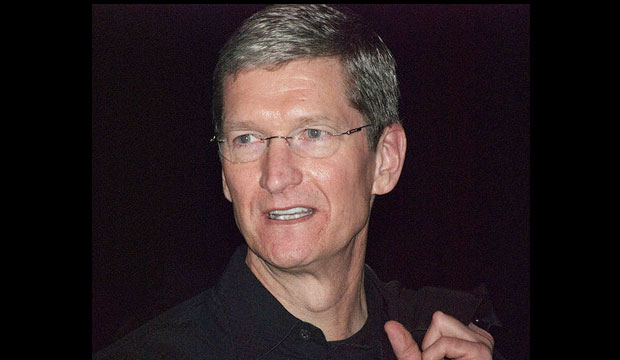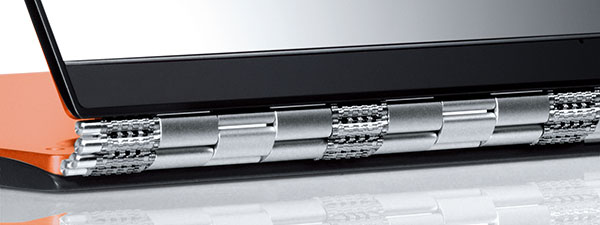
I was at IBM’s z13 mainframe launch last week, and it brought back a lot of memories, because I was at IBM when the era of the mainframe collapsed. I also happened to be covering Apple when the era of the Mac collapsed, following the launch of Windows 95, and I have watched both companies recover — largely by rediscovering what made them great in the first place.
Strangely, even though these firms focus on vastly different customer bases, their core differentiating fundamentals of product control and customer experience are very similar and well differentiated from their competitors. Both Ginny Rometty and Tim Cook are under clouds as well — Ginny because she is often put in a pool of women CEOs who were selected for something other than skill, and Cook because he is constantly under Steve Jobs’ shadow.
What if both CEOs were to realize their salvation was in each other and did something truly spectacular? I’ll explore that and close with my product of the week: the Lenovo Yoga Pro.
Cook’s and Rometty’s Problem
Cook has the bigger problem, and I don’t envy anyone who takes over from a beloved iconic company founder. People tend to remember them in almost god-like terms, ignore their faults, and set a bar that generally isn’t humanly possible to achieve. It didn’t help that it was apparent Cook was best at things Jobs’ sucked at, and he was selected largely because Jobs thought he could take the job back from him when he recovered.

Cook has demonstrated that he is both a damn good manager and that he is no Steve Jobs — they are very different people. Unless Cook can get out of Jobs’ shadow, though, he’ll likely go down in history largely unremembered — or worse, remembered for the un-Jobs-like mistakes he made.
Most women CEOs seem to get their jobs either because their companies are — in the eyes of their male counterparts — unrecoverable, or for reasons other than their skills and competence. I could argue there are a significant number of male CEOs that we could say the same thing about, but I’ll save that for another time.
In that world, Rometty is very different, because IBM actually grooms and trains its CEO candidates, which means that regardless of your perception of women CEOs, Rometty is likely better trained and qualified than most CEOs, regardless of sex. (By the way, the woman who really should be pissed about this is Mary Barra at GM, who was given an impossible job and is amazing everyone by actually doing the impossible damn well).
Both Rometty and Cook deserve better — but unless they do something spectacular, they likely won’t get out from under their respective clouds.
The Importance of Partnerships
Now, most partnerships between companies like IBM and Apple are mostly about the announcement — in fact, the biggest deal is often the photo op. One of the most memorable was between Microsoft and Sun. I can recall the event like it was yesterday.
I ran into both Scott McNealy and Steve Ballmer, and while both men certainly knew and greeted me, it was clear there was some unusual tension. I focused on the men during the event: McNealy, who had gotten a really big check out of Steve, was chatting up Steve; Steve had a look on his face that I’d equate to what I’d have if I were literally sitting next to a pile of cow dung. He clearly wanted to be anyplace but next to Scott — and until Sun failed, that press event was likely the biggest thing the two companies ever did together.
Though rarely that bad, these things usually don’t amount to even a footnote in tech history. It doesn’t have to be that way, though. Recall that the IBM-Microsoft alliance changed the industry; Intel and Microsoft damn near took over the world; and Cisco and EMC, with VCE, redefined IT. The fact that I can’t think of any more notable successes showcases how rare they are — but when they work, thanks to the combined resources of the firms, the result can be world-changing.
IBM and Apple
IBM just released the z13, which is a very specialized high-performance server specifically targeting mobile loads. Apple is the dominant (it still is, sorry Samsung) provider of mobile products. Both lead in customer focus and satisfaction, and both go to excessive lengths to control the customer experience. Apple sucks at cloud apps and historically couldn’t spell enterprise, and IBM exited the personal technology business as a failure — but both firms are leaders in what the other sucks at.
Add to this IBM’s Watson capability, which could make Siri truly smart, along with Apple’s marketing and design excellence, and you could have an end-to-end mobile solution that would be unbeatable in the market — and, were they to get creative, change it as well. While the z13 is likely ready for this, it is likely Apple would need to develop lines that were more like Panasonic’s Toughbook and Toughpad or Lenovo’s Think products, which are far more IBM-like, and focus more on security and being robust — but I think Cook would be OK with that, at least for business markets.
Wrapping Up
I think the end result could be far better — and with respect to design, customer focus and experience, would be — than anything anyone else possibly could create. The solution would combine the power of the oldest, most trusted, and most storied enterprise company with the image of the most attractive and must successful consumer electronics firm from the prior decade.
If the two firms pulled this off, their CEOs would be remembered for turning the market and for their accomplishments — not for their sex or that they were a pale shadow of the guy they replaced.
In short, the result could be amazing!
Product of the Week: Lenovo Yoga 3 Pro

The reason I picked the Lenovo Yoga 3 Pro this week is that it comes closest to a product that blends attractive design with the kinds of things a business might want to purchase. It is a nicely executed concept that could form the basis for the design language that Apple and IBM could create for the enterprise.
The Yoga 3 Pro is beautiful, powerful, has decent battery life, and has a unique watchband hinge that makes me drool every time I see it. It reflects Apple-level quality and design and ThinkPad manufacturing and durability to create a near-perfect bridge between business and consumer needs.

Component-wise, it uses the very power-efficient Intel Core M processor, runs Windows 8.1 Pro, and it has a Quad HD 13.3-inch IPS display — 3200×1800 against the 13-inch MacBook Air’s 1440×990.
It can have up to 512 GB of storage while the Air maxes out at 256 GB, and it weighs in at 2.5 pounds, while the Air is 2.9 pounds. The MacBook Air and Yoga 3 price out nearly identically, in the mid US$1,000s when equally configured. Oh, and the Yoga 3 Pro has that amazing, beautiful hinge.
When I think BYOD, I think of this product, and because it is the best example of a possible blend of what IBM and Apple could do — so far — the Lenovo Yoga 3 Pro is my product of the week.






















































